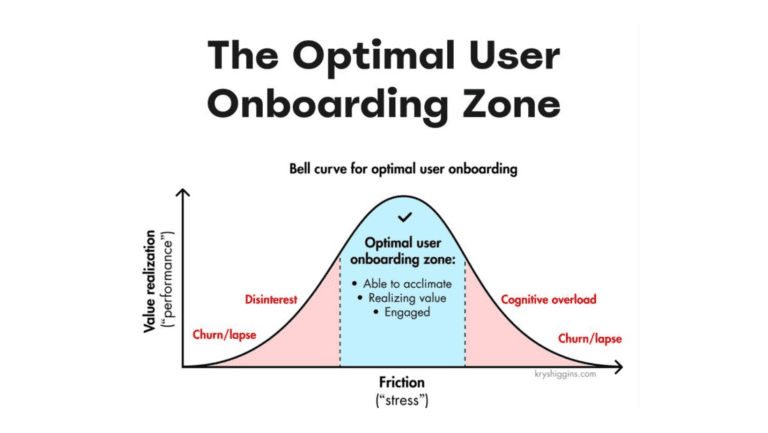Today there are about 2 billion live websites, but only 20% of them are active.
 Source: Hosting Tribunal
And on average, internet users in the US visit 130+ web pages daily. Visiting websites has become a critical part of a person’s average day.
In today’s accelerating digital world, your website is the face of your brand, your key sales generator, and, arguably, your leading marketing tool.
Simply put, your website needs to be exceptional. And matching customer expectations are at an all-time high. For 48% of people, website design is the critical factor in determining a business’s credibility.
So how can you get your website to meet and, hopefully, exceed customer expectations?
At a minimum, you should follow 3 key steps:
Source: Hosting Tribunal
And on average, internet users in the US visit 130+ web pages daily. Visiting websites has become a critical part of a person’s average day.
In today’s accelerating digital world, your website is the face of your brand, your key sales generator, and, arguably, your leading marketing tool.
Simply put, your website needs to be exceptional. And matching customer expectations are at an all-time high. For 48% of people, website design is the critical factor in determining a business’s credibility.
So how can you get your website to meet and, hopefully, exceed customer expectations?
At a minimum, you should follow 3 key steps:
 Source: Wix
Source: Wix
 Source: Wix
Source: Wix
 Source: Wix
The Sales Overview shows your site’s sales and transaction information including total sales, total orders, average order value, top-selling items, sales by billing location, and more.
The Behavior Overview displays the visitor engagement data including the bounce rate, average session duration, top navigation flows, most popular pages, abandoned carts, store conversion funnel, and more.
And if you’d like to supplement these metrics even further, you should consider additional third-party monitoring and observability tools.
For example, our tool – Germain UX – is an end-to-end, Alerts, Insights, and Automation software platform built to improve User Experience (UX) in the broadest sense of the term.
Source: Wix
The Sales Overview shows your site’s sales and transaction information including total sales, total orders, average order value, top-selling items, sales by billing location, and more.
The Behavior Overview displays the visitor engagement data including the bounce rate, average session duration, top navigation flows, most popular pages, abandoned carts, store conversion funnel, and more.
And if you’d like to supplement these metrics even further, you should consider additional third-party monitoring and observability tools.
For example, our tool – Germain UX – is an end-to-end, Alerts, Insights, and Automation software platform built to improve User Experience (UX) in the broadest sense of the term.
 Source: Dribble
Source: Dribble
 Source: Hosting Tribunal
And on average, internet users in the US visit 130+ web pages daily. Visiting websites has become a critical part of a person’s average day.
In today’s accelerating digital world, your website is the face of your brand, your key sales generator, and, arguably, your leading marketing tool.
Simply put, your website needs to be exceptional. And matching customer expectations are at an all-time high. For 48% of people, website design is the critical factor in determining a business’s credibility.
So how can you get your website to meet and, hopefully, exceed customer expectations?
At a minimum, you should follow 3 key steps:
Source: Hosting Tribunal
And on average, internet users in the US visit 130+ web pages daily. Visiting websites has become a critical part of a person’s average day.
In today’s accelerating digital world, your website is the face of your brand, your key sales generator, and, arguably, your leading marketing tool.
Simply put, your website needs to be exceptional. And matching customer expectations are at an all-time high. For 48% of people, website design is the critical factor in determining a business’s credibility.
So how can you get your website to meet and, hopefully, exceed customer expectations?
At a minimum, you should follow 3 key steps:
- Pick the right platform to help you set up your web presence, for example, Wix.
- Understand and utilize all relevant platform functionalities available to you.
- Know and action the latest best practices on web design and usability.
What is Wix?
With over 220 million users, Wix is one of the leading platforms that can help you create, design, manage and develop your web presence in 6 easy steps:- Sign up for the free website builder and choose what kind of website you want to create.
- Customize a template or get a website made for you.
- Drag and drop thousands of design features (add text, galleries, videos, animation, scroll effects, vector art, etc.).
- Customize it for your business: add an online store, booking system, members area, or blog.
- Publish your website and go live.
- Use advanced SEO tools and marketing solutions to drive traffic to your site.
What are Wix’s Key Functionalities?
Most importantly, Wix makes it possible to create a high-quality website without knowing how to code. However, if one does know how to code, Velo also allows for additional advanced functionalities. But Wix comes with some other powerful functionalities.- Website templates
 Source: Wix
Source: Wix
- Customization functionalities
- Complete suite of SEO tools
 Source: Wix
Source: Wix
- Powerful analytics
 Source: Wix
The Sales Overview shows your site’s sales and transaction information including total sales, total orders, average order value, top-selling items, sales by billing location, and more.
The Behavior Overview displays the visitor engagement data including the bounce rate, average session duration, top navigation flows, most popular pages, abandoned carts, store conversion funnel, and more.
And if you’d like to supplement these metrics even further, you should consider additional third-party monitoring and observability tools.
For example, our tool – Germain UX – is an end-to-end, Alerts, Insights, and Automation software platform built to improve User Experience (UX) in the broadest sense of the term.
Source: Wix
The Sales Overview shows your site’s sales and transaction information including total sales, total orders, average order value, top-selling items, sales by billing location, and more.
The Behavior Overview displays the visitor engagement data including the bounce rate, average session duration, top navigation flows, most popular pages, abandoned carts, store conversion funnel, and more.
And if you’d like to supplement these metrics even further, you should consider additional third-party monitoring and observability tools.
For example, our tool – Germain UX – is an end-to-end, Alerts, Insights, and Automation software platform built to improve User Experience (UX) in the broadest sense of the term.
What are the Latest Best Practices In Web Design and Usability?
When designing a website, it’s key to follow the latest best practices and not only get hung up on the aesthetics. The website should also be optimized for usability, ease of use, and user experience (UX). While one could spend hours studying the ins and outs here, there is a set of best practices that is a good general starting point. For example, the HubSpot team highlights the following key website design guidelines to follow:- Simplicity
- Visual hierarchy
- Navigability
- Consistency
- Responsivity
- Accessibility
- Conventionality
- Credibility
- User-centricity
 Source: Dribble
Source: Dribble




